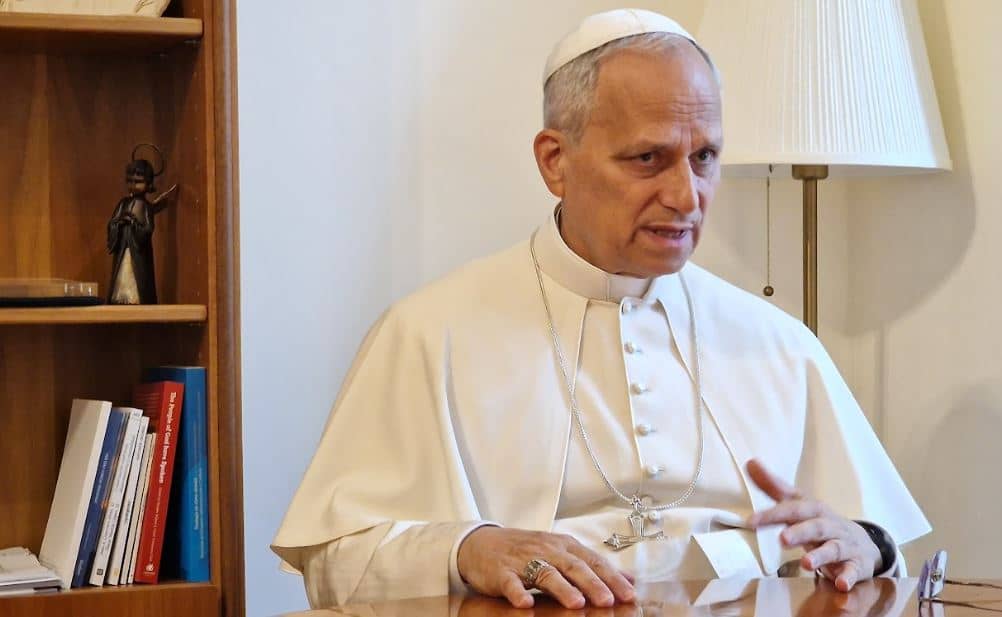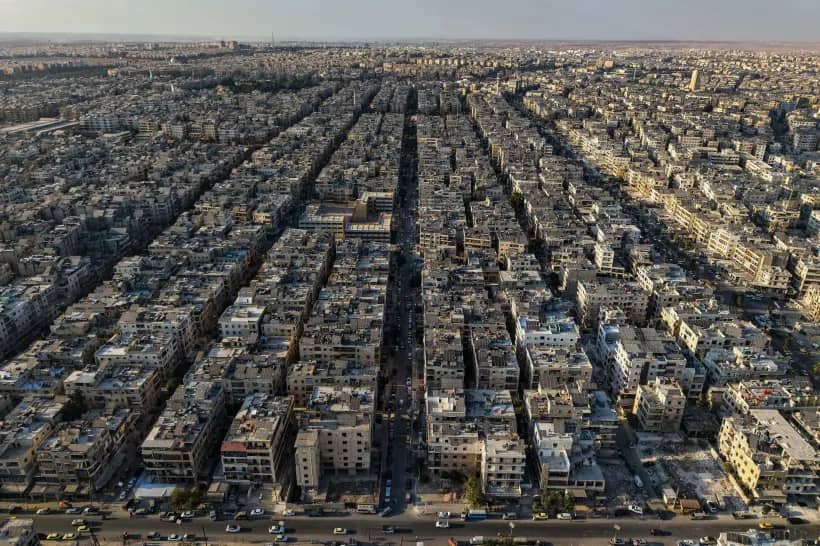[Editor’s Note: Jesuit Father John Thiede is Assistant Professor of Theology at the University of Marquette in Milwaukee. He earned his Ph.D. from the University of Notre Dame in Systematic Theology. His dissertation is titled: The Reality of Martyrdom in the Christology of Jon Sobrino. His latest book is Remembering Oscar Romero and the Martyrs of El Salvador: A Cloud of Witnesses. He spoke to Charles Camosy about the changing face of martyrs in today’s world.]
Camosy: Martyrdom, I think it is fair to say, is a hot topic. Pope Francis has had new and interesting things to say and teach. And, perhaps in a related story, the violence directed at Christians overseas has also focused a lot of attention on the topic, yes?
Actually, I think the interest in martyrdom began during the papacy of John Paul II and continued with Pope Benedict. With Pope John Paul II and his universal call to holiness more men and women were canonized than by any of his recent predecessors. These canonizations included a number who were named both martyr and saint. But many of the martyrs Pope John Paul II had interest in came from Europe, Africa and Asia.
I think what has changed with Francis as the first Latin American Pope is the focus on martyrdom in Latin America.
Before Archbishop Oscar Romero’s beatification, Francis asked theologians to explore an expanded or more updated definition of martyrdom which might include martyrs from the Latin American reality in the 20th Century and today. (This does not include the many martyrs already named from the colonial period, killed by non-Christian indigenous groups like Jesuit Father Roque Gonzalez from the Paraguayan reductions.) Pope Francis echoed the great German Jesuit theologian Karl Rahner’s question, how is it that a standing archbishop who is killed while celebrating mass was not immediately declared a martyr? But, you are correct that Pope Francis continues to speak about martyrs, since most recently he referenced martyrs in Colombia and the priest from Oklahoma City killed in Guatemala.
And, in the middle of all this conversation, here comes your book. What got you interested in this subject matter? And how did you end up writing this particular book as a result of that interest?
During doctoral studies at the University of Notre Dame, after taking courses and serving as a teaching assistant for the great Dominican Peruvian theologian Gustavo Gutierrez, I knew I wanted to write a dissertation which explored a theme which was significant in Latin America. Because of my interest in Christology I was drawn to the work of Jesuit Jon Sobrino. Spanish by birth but longtime missionary and professor at the UCA, the Jesuit university in San Salvador, El Salvador.
As I sat in the office of Larry Cunningham, former chair of Notre Dame’s department of theology and prolific writer, and seeing all of the recent books to be reviewed on his bookshelf concerning various martyrs throughout the world, the idea surged to write about the reality of martyrdom in Latin America and how it directly affected the Christology of Sobrino.
Then more recently, as I taught Marquette students about the various men and women killed in Latin America in the 20th century and today in my Introduction to Latin American Theology course, I would ask students to debate whether or not an expanded definition of martyrdom was necessary. I found that my students were incredibly impressed by the witness and deep Christian faith of these men and women. So, the idea came to write a book which combined my previous work on Sobrino and to use four primary case studies of martyrs from El Salvador, Rutilio Grande, Oscar Romero, the U.S. churchwomen, and the six Jesuits and two women killed at the UCA.
The classic case for martyrdom seems clear, a martyr dies in Odium Fidei, for the hatred of the faith, how do you make a case for an expanded definition of martyrdom?
I think most Catholic Christians remember the classical definition of a martyr as they were taught in their Cathechism or CCD classes. A martyr is one who is killed for the “hatred of the faith” or in Odium Fidei.
Most Catholics are taught that the first Christian martyr was Saint Stephen, depicted as being filled with the Holy Spirit, but stoned to death in the Book of Acts under the watchful eye of Saul.
These cases in which a Christian is killed by a non-Christian are usually clear. The Christian is killed by someone because of their faith or because they refuse to renounce their faith. Tradition tells us that almost all of the 12 apostles were martyrs, as well as Perpetua and Felicity, Saint Polycarp, and a number of bishops, priests and Christian women and men in the early church.
The more modern examples of the Monks of Tibhirine in Algeria killed by Muslim extremists and the recent movie depicting the Japanese martyrs in the movie “Silence” both illustrate this classic definition. But the church has had more difficulty in categorizing martyrs in the 20th century and today.
Rahner points out the oddity that Alfred Delp and Jesuit Brother Rupert Mayer were originally categorized as Confessors and not as Martyrs in their canonization processes. Since some who orchestrated their deaths were purportedly Christians, technically they weren’t martyrs even though they may have been hated for their faith and Christian witness. The Latin American reality also produces a new category, which Sobrino suggests as martyrs for justice or ‘Jesuanic’ martyrs.
These potential martyrs were killed in some cases by devout Christians, or in the Salvadoran case, even deaths ordered by generals who were purportedly daily communicants. But large numbers of lay catechists, women religious, deacons, and priests were killed in various Latin American countries such as Argentina, Chile, Brazil, and Mexico in addition to Central America. They were sometimes branded socialists, communists, or enemies of the State and their Catholic faith was minimized.
So in the book I try to use Sobrino and other theologians to suggest an expanded definition of martyrdom, one which looks at Jesus Christ as proto-martyr and suggests that one can be killed for their Christian witness and hated for their faith even if the perpetrator is purportedly Christian or even Catholic.
Why is Oscar Romero a test case for an expanded definition of martyrdom today?
Without getting into too many of the historical details, Archbishop Oscar Romero was killed while saying Mass by a military sharpshooter ordered by a government official. At the time, he was the first standing archbishop murdered in such a public space since Thomas Beckett in the Middle Ages.
Yet, many opposed his being named as a martyr since his detractors claimed that he was killed for purely political reasons. Now that we have some distance from the historical events, many have written to clarify that in fact he was killed for preaching church doctrine, Catholic Social Teaching, and the evangelical message of Jesus Christ.
Historical evidence now suggests that in fact he continued to baptize and celebrate weddings for the Catholic elite in San Salvador, celebrate daily and weekly mass and preach at the cathedral, while at the same time asking for justice for mothers of the disappeared and trying to act as a broker and mediator in the Salvadoran peace process.
In fact, popularly he has already been acclaimed as a martyr and a saint in El Salvador and throughout Latin America. It is not uncommon to find his picture hanging in someone’s home, and I am not simply referring to Jesuit communities here, but devout Catholic families throughout El Salvador. Often the heading reads “Santo” (Saint) or “Martyr.”
When I attended a Jesuit ordination in Brazil I was shocked to find a picture of Romero with the caption San Romero de las Americas listed below. At the time of Romero’s 30thanniversary I attended a mass in San Salvador where the presiding bishop used the term martyr to describe him, and his name headed the list of hundreds of men and women listed as martyrs on a placard of a base community from Chalatenango.
So, in this way he is a perfect example to provide a theological reason for naming him as martyr. Finally, when I visited Jon Sobrino in his office at the UCA, I looked up and noticed that hanging above on the wall across from his desk were portraits of three of the cases I researched for my book, Jesuit Father Rutilio Grande, Oscar Romero, and Jesuit Father Ignacio Ellacuría. I don’t think it was unintentional that Archbishop Oscar Romero’s picture was in the center of the three.
Can you say more about Pope Francis’ role in all of this?
I think Pope Francis lived through one of Argentina’s most difficult periods, especially when thinking of the relationship between church and state. As Jesuit provincial, he was forced to guide the Society of Jesus through an incredibly turbulent time during Argentina’s so-called dirty war. As a former provincial and a Jesuit, he was also no doubt privy to information about other countries, but certainly the atrocities of the killing of the Jesuits at the UCA in 1989 would have hit him close to his heart.
I also think that as bishop and later Archbishop of Buenos Aires he would have looked at the case of Archbishop Romero in a different light. I think that is the reason why a number of the barriers in the beatification process for Romero were lifted. And I think Pope Francis’ petition to theologians for providing a theological reason for declaring Romero as a martyr and eventually a saint is not an unintentional one.
Having been given access to the documents of Romero’s beatification process, it is clear that often Romero is simply named a martyr, but without significant theological reflection on what that means. In many ways, I thank Pope Francis for challenging theologians to provide an expanded definition for martyrdom so that we might account for the many Catholic Christian men and women who lay down their lives for their communities and their Church.
In accounting for the more prolific martyrs like Romero, the U.S. churchwomen, and more recently Sister Dorothy Stang, Archbishop Girardi and others, we might also account for those Christians who die more anonymous deaths. My only hope is that in some small way this book not only brings awareness to these more prolific martyrs, but also to those more anonymous martyrs, while proposing an expanded definition in the line of Rahner, Metz, and Sobrino which our current pope invites.
















